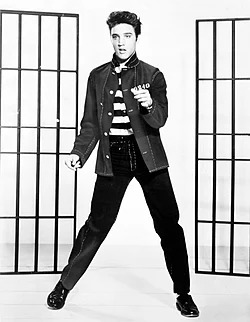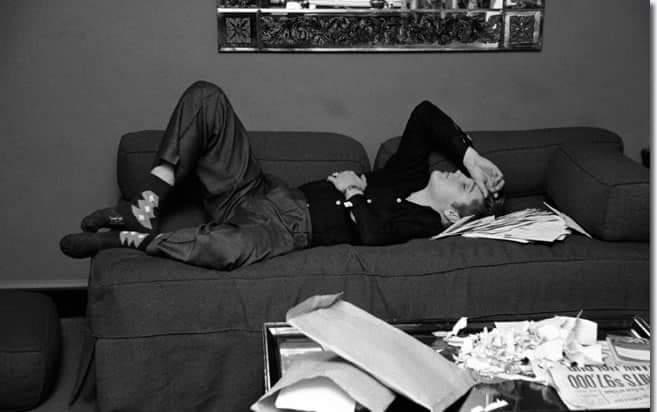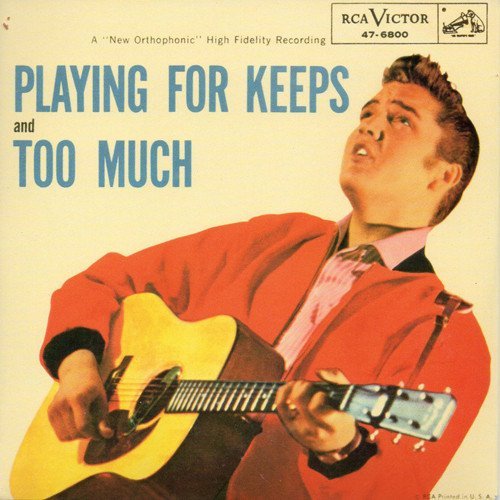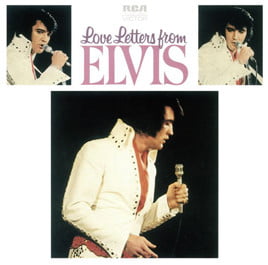THE MASTER IN ACTION
September 1-3 1956, Radio Recorders
THE SECOND ALBUM
RCA had financial reasons of its own and demanded that this session be held, so the Colonel was eventually forced to agree to a Labor Day weekend session at Radio Recorders studio in Hollywood, CA.
Hill & Range publishers sent Elvis hit songs like “Rock Around The Clock,” Faye Adams’ “Shake A Hand” and Ivory Joe Hunter’s “I Almost Lost My Mind.”
(adsbygoogle = window.adsbygoogle || []).push({});
Two came from Sun Records, “Playing For Keeps”, a new Stan Kesler song, the one from “I’m Left, You’re Right, She’s Gone” and “I Forgot To Remember To Forget”, and the other was ” Ooby Dooby” by Roy Orbison.
By this time Steve Sholes, Elvis’s producer, had sent him many songs so that he could choose the recordings that were going to be made for the next album.
Since RCA did not have a studio of its own in Hollywood, the session was held at Radio Recorders, an independent studio in Santa Monica.
The sound engineer in charge of this session was Thorne Nogar, who had been hired by RCA. He was a calm and patient person with artists, which is why Elvis liked him at the time.
Bill Bullock, Steve Sholes and Colonel Parker, as well as West Coast Sales and Promotions Manager Robert Mosley were in attendance.
Elvis liked him and around this time a young man named Bones Howe was also hired and started working with RCA, a future recording engineer.
(adsbygoogle = window.adsbygoogle || []).push({});
From the first moment Elvis dominated the direction of the songs, in his own way, he was very clear about what he wanted in each song and he asked for it and repeated it until it sounded like he had it in his head.
Elvis had the habit when he listened to the songs of touching his head as a sign of wanting to listen to it again and when he didn’t like it what he did was run his finger horizontally across his throat.
The first day of recording was a great moment of optimism with decisions made by Elvis who dominated everything that was being done.
Although Steve Sholes, the producer, would call out take numbers, meticulously record all session information, and ask for another take or make a suggestion, it would actually be Elvis who was responsible for the entire session.
He and no one else but him set the pace, the feeling in the session, the way it was done, the improvements, and the direction was ultimately his.
Elvis would stand in the center and put up a unidirectional microphone so he could be right in front of the Jordanaires.
He would go over the material with the musicians, over and over again improving their performance, and would also suggest making arrangements.
To see the result and give it the go-ahead, he asked Freddy Bienstock to play the recording over and over again; listening intently to the final mix with Thorne, who was called “Stoney”.
(adsbygoogle = window.adsbygoogle || []).push({});
With each song a meticulous work was done, but for Elvis the most important thing was that the resulting song had the “feeling” that made him feel good.
Bones Howe explained that if there was a mistake, it was not important because what Elvis was looking for was that “feeling”.
Everything was perfect in these sessions, there was a lot of energy and Elvis was an improviser and surprised with his innovations.
Engineer Thorne gave him the freedom to do as he pleased, as did Sholes. On the second day he would record the songs “Too Much” and “Anyplace Is Paradise”, as well as “Old Shep”, which Elvis had known since he was a child.
In this session Elvis played the piano himself, and it was the first time he did it in an RCA session, the emotion overwhelmed him and “Old Shep” was perfect in a first take, although some more were tried.
On “Too Much” he had to record twelve takes, but there seemed to be some difficulty as Scotty Moore confessed on the guitar solo.
The song “Anyplace Is Paradise” was an upbeat, uptempo blues song, which took twenty-two takes.
He recorded Little Richard songs as well as a Wiley Walker and Gene Sullivan tune called “When My Blue Moon Turns to Gold Again.”
(adsbygoogle = window.adsbygoogle || []).push({});
He also recorded a new song by Aaron Schroeder and Ben Weisman, two of Hill & Range’s top young writers, from which Elvis would record several songs in the future.
He played around with some Gospel songs with the Jordanaires and sang “Love Me Tender” for everyone several times.
As was his custom, Elvis sang Spirituals until he was tired, thus finding inspiration to face the recordings and search for his creative process.
This was something I had been doing ever since I was working for Sam Phillips, at the Sun Records studios.
As a result of these recordings, the album “Elvis” would be published, which includes 11 songs from these sessions in addition to a song previously recorded as “So Glad you’re mine”, in January of the same year.
The LP was published on October 18, 1956 and it would be an absolute success, staying for 4 weeks in the first place of the Billboard Top Pop Albums.
It was certified Gold on February 17, 1960 by the RIAA.
Source: Elvis – Stories
Information provided by Elvis Shop Argentina
https://2001elvisfanclubargentina.blogspot.com/p/principal.html?m=1
(adsbygoogle = window.adsbygoogle || []).push({});















